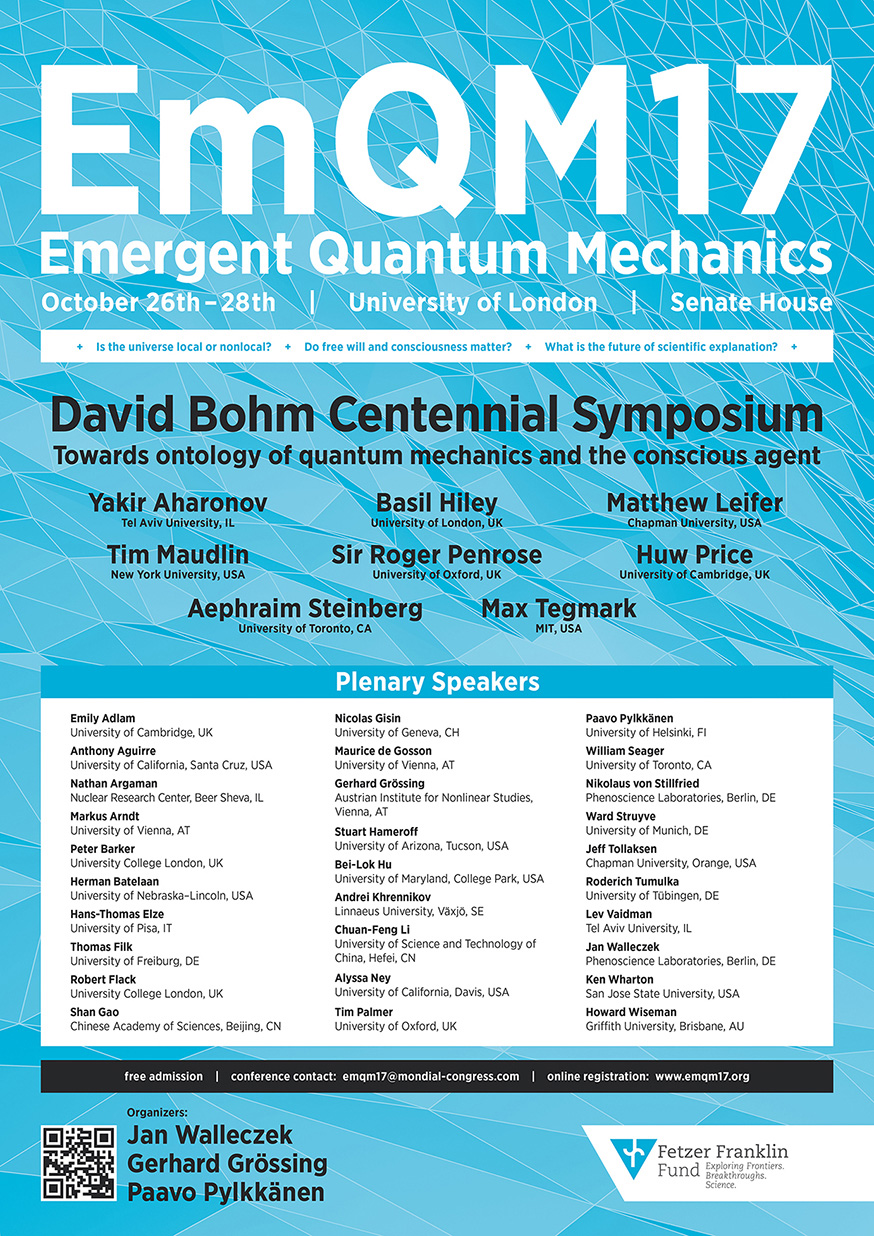Nathan Argaman
Nuclear Research Center Negev, Beer Sheva, IL
A Lenient Causal Arrow of Time?
Presentation
Abstract
The literature on Bell’s theorem includes much discussion of different definitions of locality, e.g., Bell’s locality vs. signal locality, or parameter independence vs. outcome independence. In contrast, Bell’s reviews of the topic identify „locality“ with „local causality,“ which is a mathematical condition representing the causal arrow of time. Elsewhere, the role of an arrow of time as an assumption leading to Bell’s theorem is downplayed, or completely omitted. An exception is the work of Huw Price, which requires complete time-reversal symmetry. It is argued that the time is ripe to seek mathematical theories in which neither the causal arrow of time nor time-reversal symmetry hold in a strict manner. As an example, the possibility that time-reversal symmetry is broken by a low-entropy-in-the-past condition is considered. For classical theories, those in which the state of the system at one time determines the state at other times, such symmetry-breaking leads to a strict causal arrow of time. For stochastic theories, the situation is less clear, but the emergence of an arrow of time for information is an intriguing possibility. The conclusion is that candidates for a „deeper-level theory“ for Quantum Mechanics can only be stochastic theories with a „lenient“ causal arrow of time.
![]()


